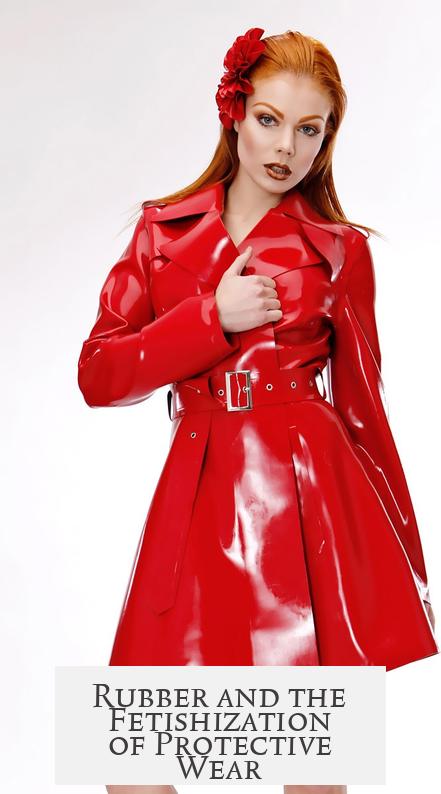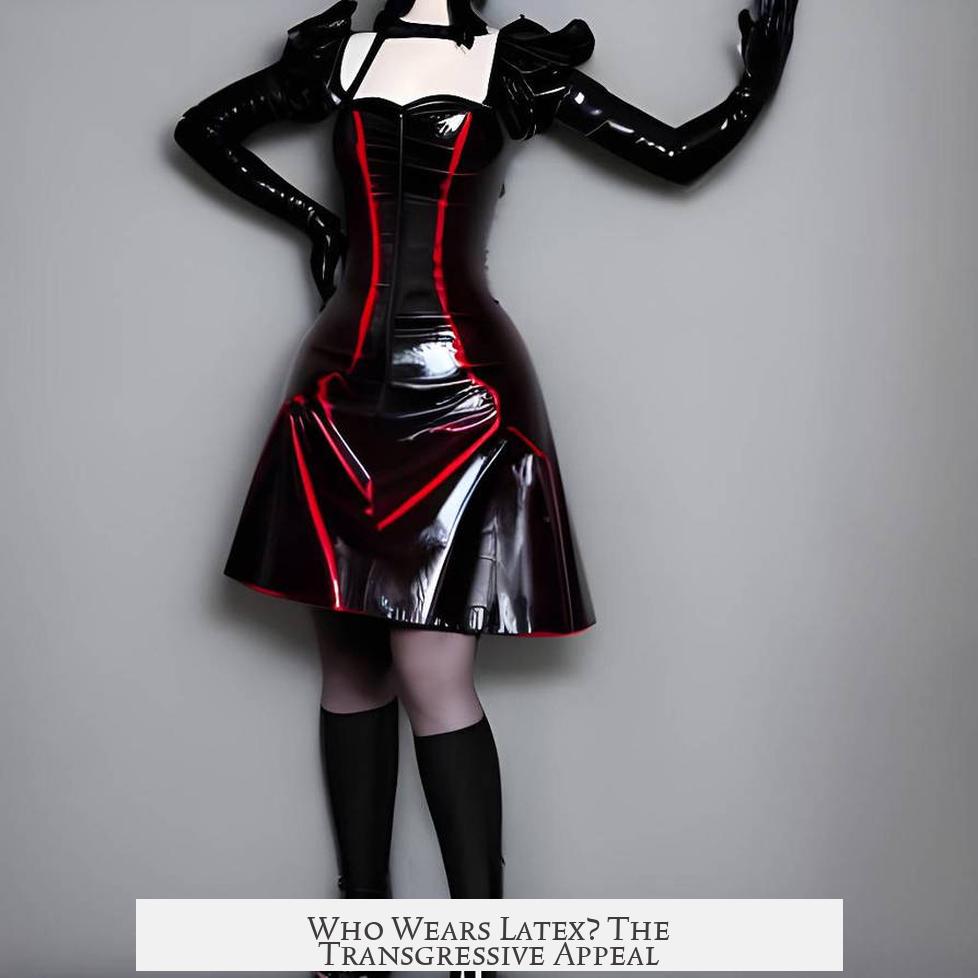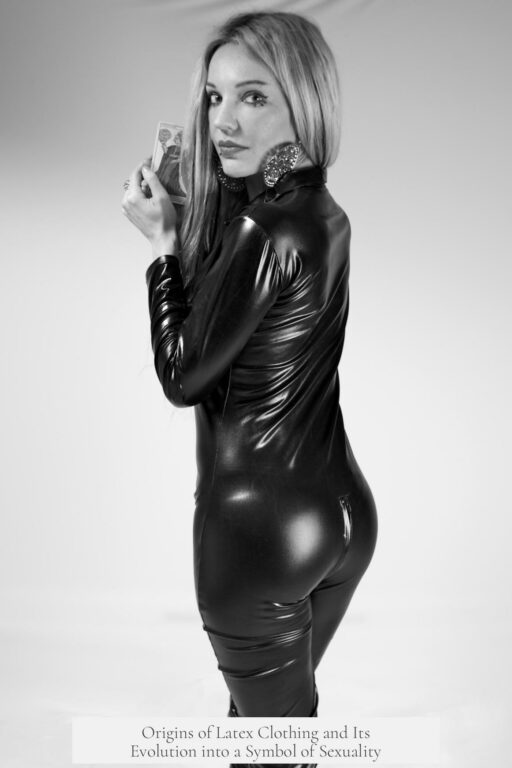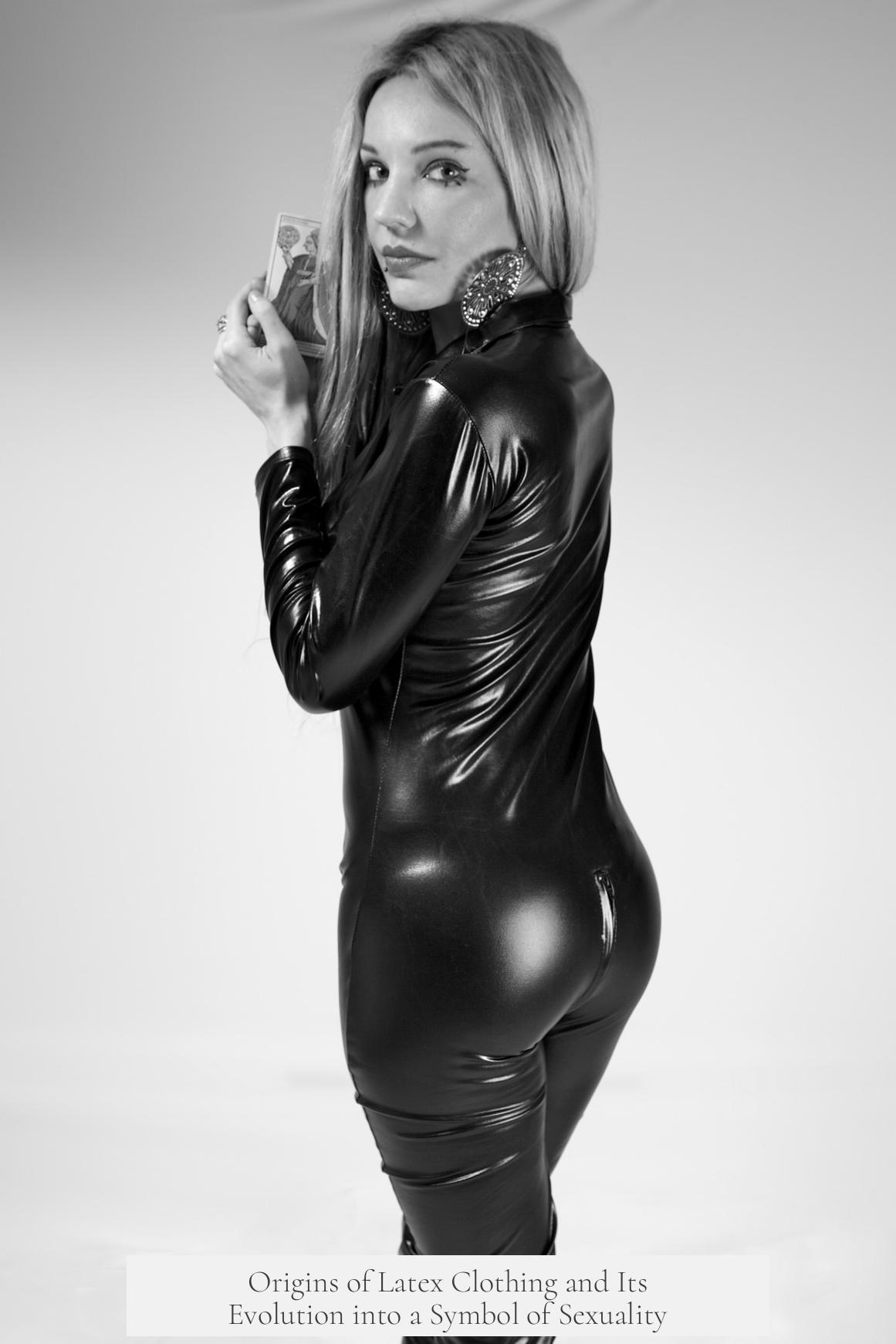Latex clothing originates from early 20th-century shifts in fetishized materials, transitioning from soft, feminine fabrics like silk and lace to smooth, shiny, masculine materials such as rubber and leather. Advances in materials technology made rubber and latex more accessible and affordable for clothing, contributing to their rising popularity.
In the 1920s, fetish culture changed focus. Before, soft materials dominated the scene. Afterwards, rubber and leather gained prominence. These materials create a “nude-but-not-nude” effect by closely conforming to the body, which enhances their suggestive nature. This body-hugging fit appeals to both wearers and observers, sparking sexual fascination.
Some theories propose that wartime experiences influenced this trend. For instance, British children wearing rubber gas masks during air raids may have formed unconscious associations with the material’s tactile sensation. Although unproven, this hypothesis relates to a broader UK tradition of fetishizing heavy protective wear. This cultural thread led to niche catalogs, like Atomage, featuring fetish fashion centered on rubber and latex.
The 1960s mark latex’s entry into mainstream fashion. Designers began experimenting with leather and rubber, associating these materials with rebellious personas. Marlon Brando in “The Wild One” popularized the leather jacket as a symbol of charisma and defiance. Yves St Laurent designed a black leather jacket for Dior in 1960, based on Paris street style, but the piece garnered controversy and cost him his job.
Later, Vivienne Westwood and Malcolm McLaren capitalized on punk fashion’s rebellious and sexual undertones. Drawing inspiration from fetish catalogs like Atomage, they merged punk aesthetics with fetish elements, opening the shop SEX in 1970. This move mainstreamed the sexual appeal of latex and leather clothing.
Latex’s sexualization is also tied to its association with socially marginalized groups. Bikers, sex workers, astronauts, and others on society’s fringes embodied latex’s transgressive allure. This edge reinforces its provocative, erotic image.
- Early 20th-century fetish shifted from soft to rubbery, shiny materials.
- Technological advances made latex affordable and suggestive.
- Wartime protective gear possibly influenced fetish culture.
- The 1960s designers embraced rebellious leather and rubber fashions.
- Westwood and McLaren commercialized fetish styles in punk fashion.
- Latex’s sexual appeal links to its transgressive, outsider symbolism.
What Are the Origins of Latex Clothing and Why Did It Become Sexualized?

Latex clothing’s origins date back to the early 20th century, when fetish fashion shifted from soft fabrics to smooth, shiny materials like rubber and leather. This shift set the stage for latex’s tantalizing, sexualized reputation today.
Let’s unpack this fascinating transformation step by step—from shifting tastes and material advances to iconic fashion designers and provocative cultural statements.
The Shift from Soft Fabrics to Shiny Surfaces
Back in the 19th century, fetishists preferred soft, delicate materials—think silk, lace, and fur—which conveyed femininity and warmth. But by the 1920s, Western pornography and clinical literature noted an emerging trend: fascination with masculine, smooth, and shiny materials such as leather and rubber.
Why the change? Partly, it’s due to developments in manufacturing. New processes made rubber and leather more affordable and accessible for clothing. Beyond cost, these materials hug the body differently. Rubber and latex cling tightly, creating a “nude-but-not-nude” illusion. To an observer, these fabrics flash a mix of vulnerability and power that is hard to ignore.
Material Technology and Sexual Suggestiveness
Latex’s close fit conjures a second-skin sensation. It’s unlike the fluffiness of silk or the softness of fur. Its shiny surface glistens under lights, amplifying curves and contours. This visual and tactile experience sparked new types of erotic expression.
On top of aesthetics, latex’s stretchiness and smoothness stimulate both the wearer and viewer. It balances between revealing too much and concealing enough, creating a playful tension. This allure is no accident—it’s baked into the material’s nature.
Rubber and the Fetishization of Protective Wear

Here’s a quirky theory: during World War II, British kids often wore rubber gas masks. Could those childhood encounters with rubber have sparked later fetishization? While unproven, rubber’s association with heavy protective gear gained traction in the UK.
This led to a long tradition of fetishizing protective clothing—think rubber gloves, gas masks, and heavy boots. Fetish catalogs like Atomage captured this niche, celebrating the rough, industrial look.
From Street Rebels to High Fashion
The 1960s marked latex and leather’s crossover into mainstream fashion. Hollywood played a huge role. Marlon Brando’s leather jacket in “The Wild One” etched a rebellious outlaw icon into pop culture.
Fashion designers took notice. Yves St Laurent’s 1960 black leather jacket for Dior was a bold move inspired by Paris streetwear. It shocked the elite and got him fired, showcasing fashion’s uneasy flirtation with these materials.
Punk, Fetish, and the SEX Shop Revolution
Fast-forward to the 1970s. Vivienne Westwood and Malcolm McLaren melded punk music’s aggressive style with fetishwear’s shock value. Their London boutique, SEX, wasn’t just a store; it was a cultural statement.
By pulling fetish looks, like latex and rubber, into punk fashion, they made sexualized clothing a symbol of rebellion and nonconformity. Atomage magazines informed their vision, fusing subculture and design like never before.
Who Wears Latex? The Transgressive Appeal

Latex clothing developed an edgy reputation by associating with socially marginalized groups — bikers, sex workers, astronauts, even the mentally ill. This association with outsiders gave latex an air of forbidden thrill.
Wearing latex became less about modesty and more about signaling defiance or dual identities—tough yet vulnerable, visible yet mysterious.
Why Does Latex Still Turn Heads Today?
When you see someone in latex, it’s not just a fashion choice; it’s a statement. It evokes power, sexuality, and rebellion all at once. The material itself has qualities that heighten the human form, making it visually striking and emotionally provocative.
So, we’re not just drawn to latex because it looks cool; we’re drawn because it taps into deep-seated cultural narratives about identity, control, and desire. It challenges norms even as it entices.
Practical Tips: Wearing Latex with Confidence
- Ensure a perfect fit. Latex is unforgiving and accentuates every curve.
- Use silicone-based lubricants or powders to put on latex smoothly.
- Pair with matte accessories to balance the intense shine.
- Confidence is key! Own the look because it speaks volumes without a word.
Lesson from History: Materials and Meaning Evolve

We often forget that what we wear carries meaning beyond fabric type. Latex’s journey from industrial rubber to fetish staple to fashion icon reminds us that materials can signify changing cultural attitudes.
It also shows how sexuality and rebellion entwine with technology and society’s fears. From gas masks to punk rock to runway runways, latex clothing tells a rich story.
In Closing
Understanding latex clothing’s origins helps us see past the surface shininess. It traces back to shifts in fetish materials, technological advances, historical influences, and rebellious fashion movements.
Its sexualization came from a mix of material appeal and cultural shifts embracing transgression and identity play. And that’s why latex continues to fascinate and provoke. What does latex clothing mean to you? Is it just fashion or something much more?




